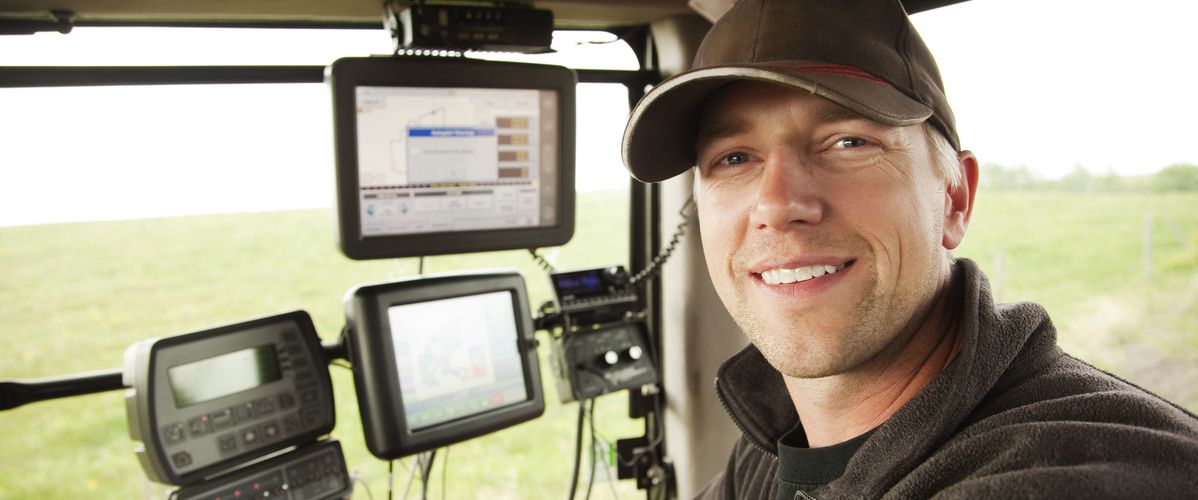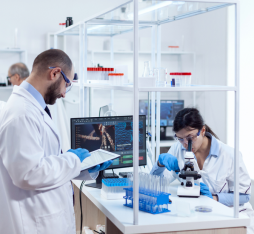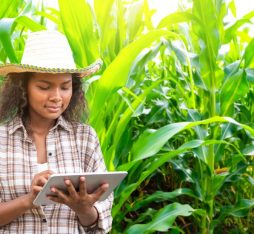• Robots are also gaining ground in vineyards and organic farms, where their adoption can help to overcome problems posed by labour shortages and the need to comply with environmental regulations.
• AI data analysis, which can detect diseased plants and optimize the use of fertilizer, is also contributing to enhanced crop management and better yields.
Recent breakthroughs in agricultural automation and robotics have ushered in the prospect of more help for farmers struggling to contend with manual labour shortages, complex resource management issues and increasingly stringent environmental regulations. At CES 2025 earlier this month, two leading companies in the agricultural machinery sector, John Deere and Kubota, presented autonomous machines designed to contribute to productivity and sustainability on farms in the future. But in 2025, just how close are we to a utopian vision of agriculture where decisions are made by AI and work is performed by robots?
AI can analyse sensor data to provide farmers with precise recommendations, improving crop management and decision-making
Robots at work in the fields
Agricultural robots are gaining ground, taking on tasks ranging from crop monitoring to mechanical weeding. According to the French Observatory for the Use of Digital Technology in Agriculture, there were around 600 agricultural robots at work in the fields in France in 2023, as opposed to 100 in 2018. As the observatory’s project manager Victoria Ruiz points out, “robots are not yet widespread, but their adoption is growing, especially in high-value-added sectors such as winegrowing.” In France, machinery producer Pellenc offers the RX 20 robot, which is used for vine shoot shredding and inter-row mechanical weeding, enabling winegrowers to manage their plots more efficiently and sustainably. Another supplier of technological solutions, Vitibot, offers the Bakus range of vineyard straddle robots, which can be equipped with different tools like electric intervines, mowers and so on.
Weeding is one time-consuming chore that many farmers would like to leave to machines, and this is one of the functions of the Oz robot developed by French start-up Naïo Technologies, which provides a mechanical solution to a problem that is often resolved with chemicals, making it particularly useful to growers of organic produce who have to limit their use of herbicides. As Stéphane Volant, head of technological innovation for the machinery cooperative CUMA Ouest, explains: “robots can take charge of tedious repetitive tasks, allowing farmers more time for higher added value activities. However, their adoption has been hampered by factors like their high cost and regulatory uncertainty.”
The game-changing impact of AI
Artificial intelligence to optimize the monitoring of crops is also a game-changer points out Brett McMickell, CTO of Kubota North America: “AI can analyse sensor data to provide farmers with precise recommendations, improving crop management and decision-making.” The technology, which can detect plant diseases, optimise fertiliser use and predict yields, has the potential to deliver significant economic and environmental benefits. It can also be integrated into agricultural equipment for continuous crop monitoring that identifies problems before they become critical, enabling farmers to react quickly and in a targeted manner to avoid losses and improve crop quality.
Collaboration and open innovation
Unlike other machinery manufacturers, the Japanese multinational Kubota has adopted an open innovation approach, which, as Brett McMickell points out, involves collaboration with a wide range of partners: “We work with universities and start-ups to incorporate the latest technological advances into our products, while making these innovations affordable and easy to use.” It is a strategy which aims to create an ecosystem that provides support to farmers embarking on a potentially difficult technological transition. The cost of accessing innovation remains high, and to overcome the financial obstacles, some farmers seek to take advantage of systems for pooling equipment. In France, cooperatives for the use of agricultural machinery (CUMAs) play a key role in this regard. As Stéphane Volant explains, “CUMAs enable farmers to share the costs and risks associated with the purchase of advanced technologies, making these innovations more affordable.” However, he further points out that “regulatory hurdles are also a barrier to more widespread adoption.” One example cited by Victoria Ruiz is the fact that “robots are not currently allowed to operate autonomously on roads, which makes it difficult to deploy them in remote fields.” Closer collaboration between legislators, technology manufacturers and farmers will be necessary to find viable solutions to problems of this kind.
The growing use of agricultural robots in France. :
In line with the trend for more automation in French agriculture, the number of robots deployed by French farmers has grown significantly in recent years: from 100 machines in 2018 to 600 in 2023.
Read more :
Observatoire des usages du numérique en agriculture (in french)














